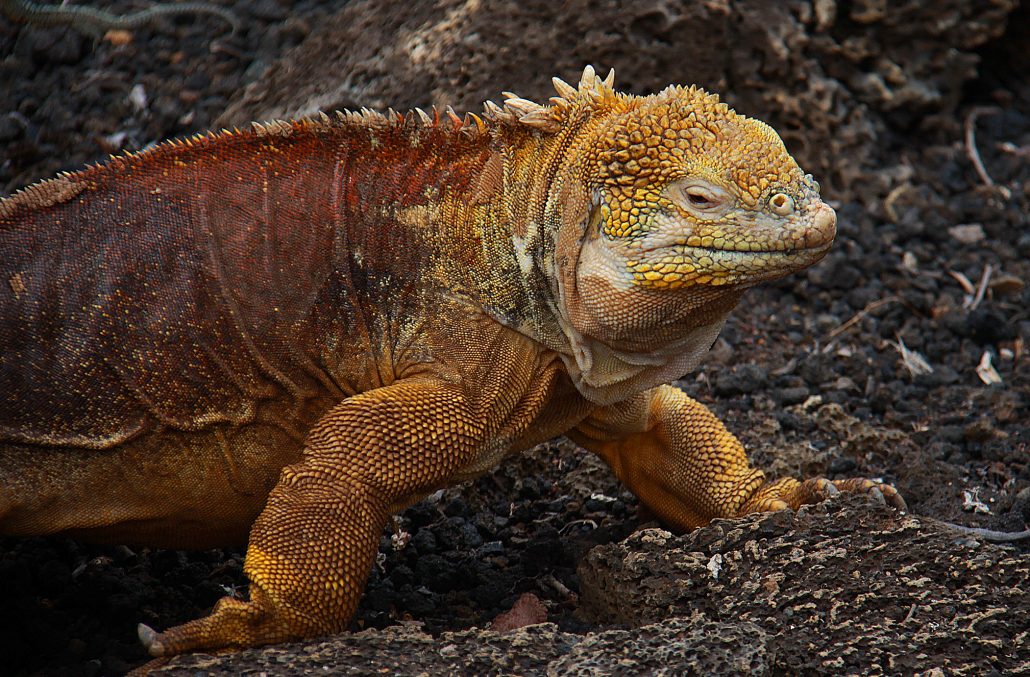Three species of iguanas can be found on six of the Galapagos Islands. From head to tail, they can measure up to 1.2 metres long! These iguanas are endemic to the Galapagos Islands and can be found in the following islands:
- Santa Cruz Island (North)
- Baltra Island – Repopulated after world war II
- North Seymour Island – Repopulated by an American researcher in 1932
- Isabela Island (Southwest)
- Isabela Island (Northern Wolf Volcano) – only discovered in 2009
- Santa Fé Island
Species Protection
In 1975, with the introduction of dogs on Santa Cruz Island, the population of iguanas were greatly reduced. The remaining 38 iguanas were transported to a smaller island – Venecia Island. The iguanas were later repopulated on Santa Cruz after the presence of dogs on the island has been eradicated. Lately, they have also been repopulated on Baltra Island. Many of the iguanas found on North Seymour island originated from Baltra. Iguanas are extremely gentle creatures who are very friendly towards people. Iguanas are currently not considered to be endangered.




